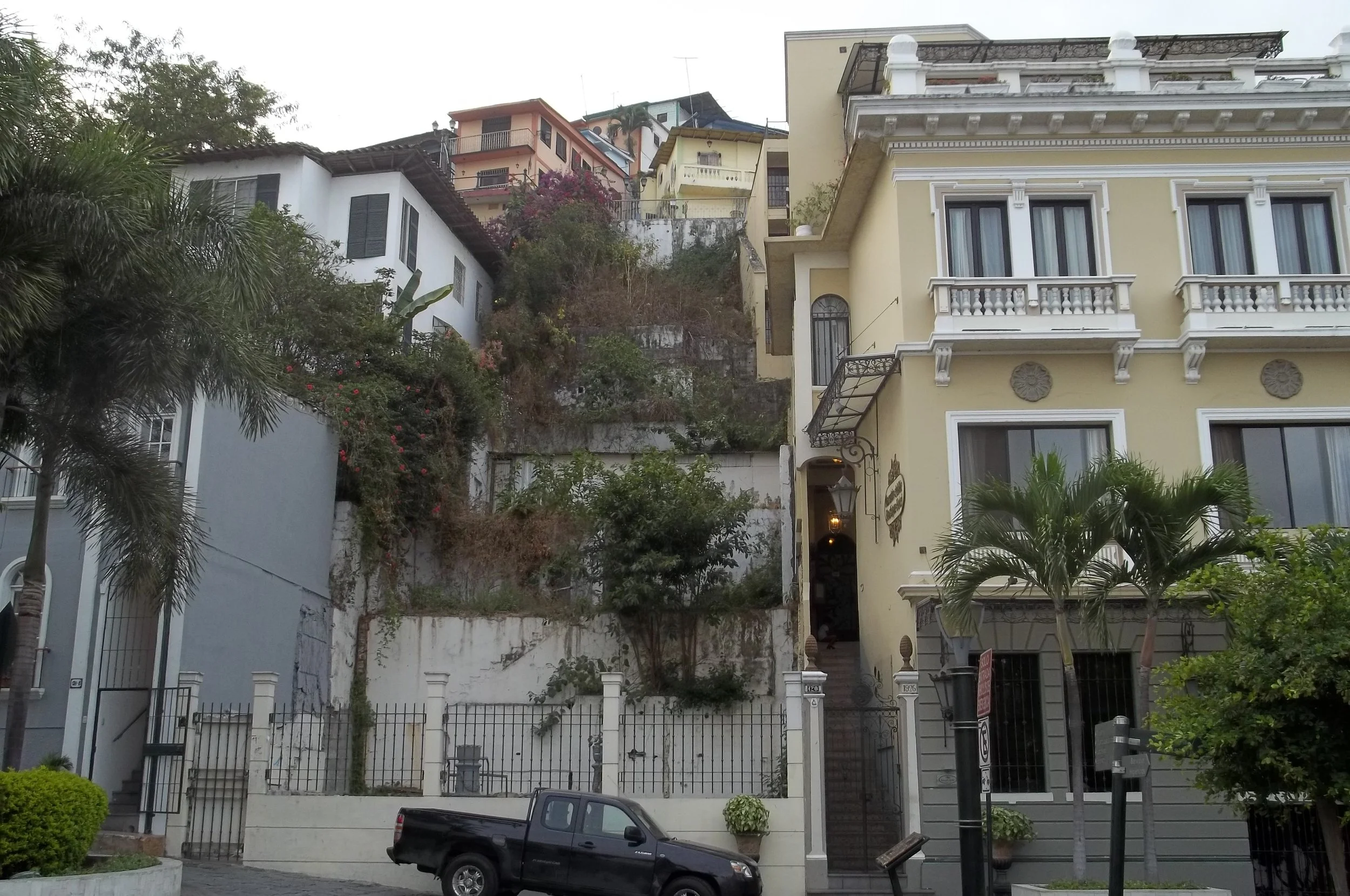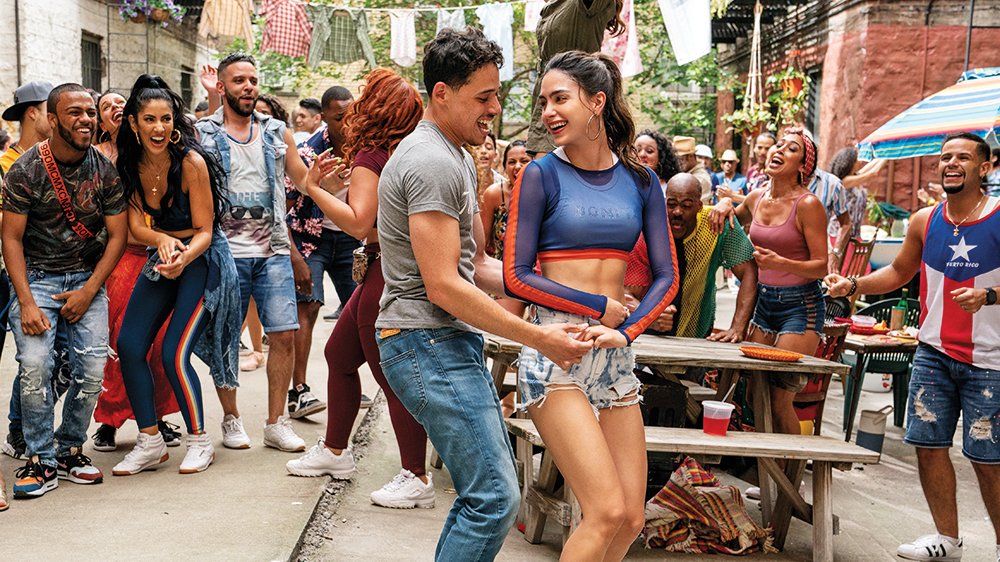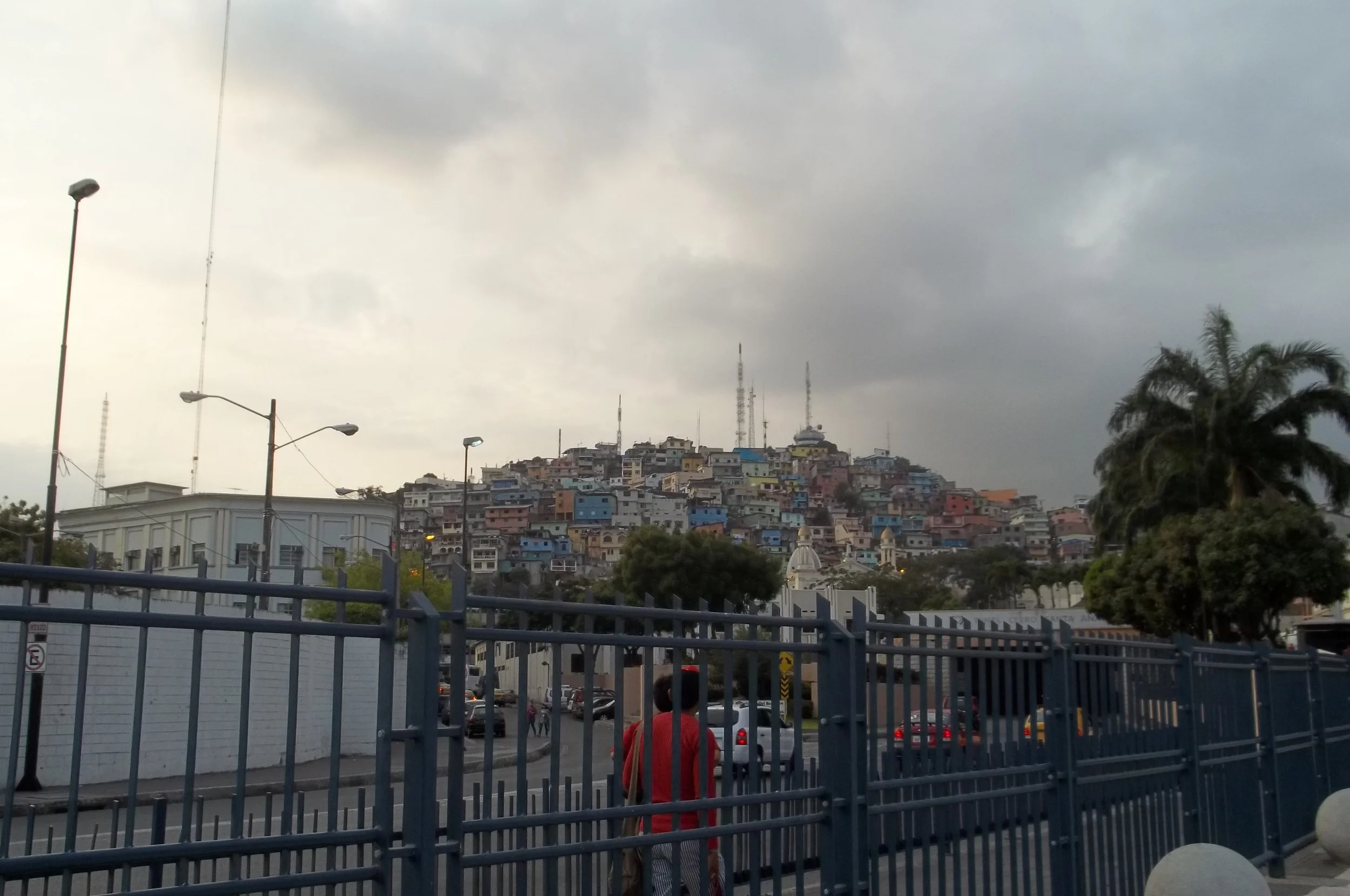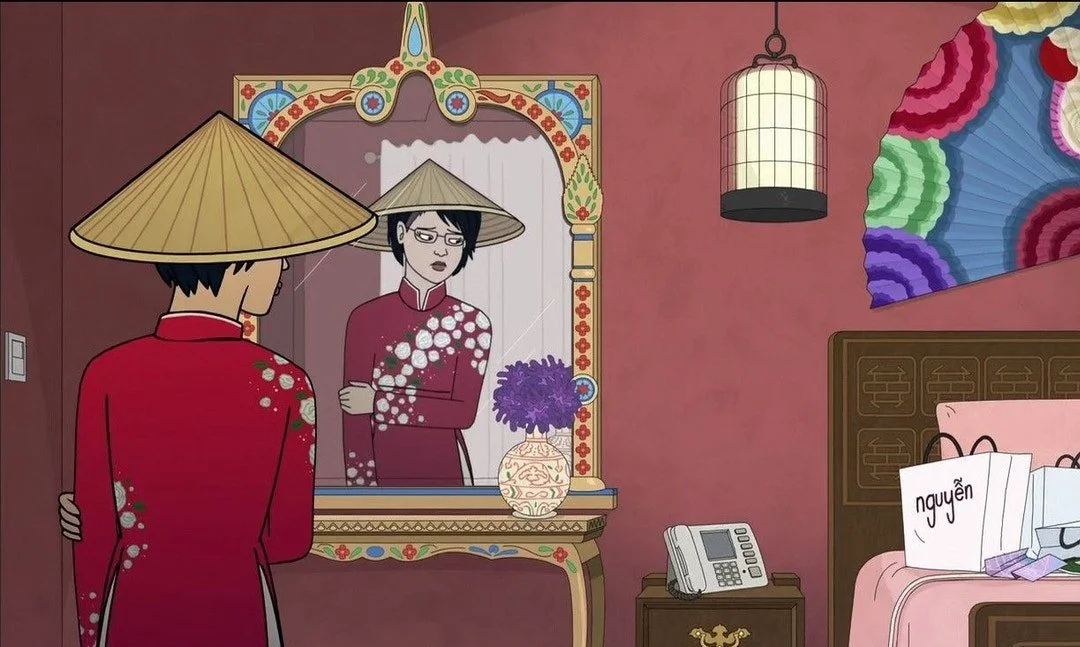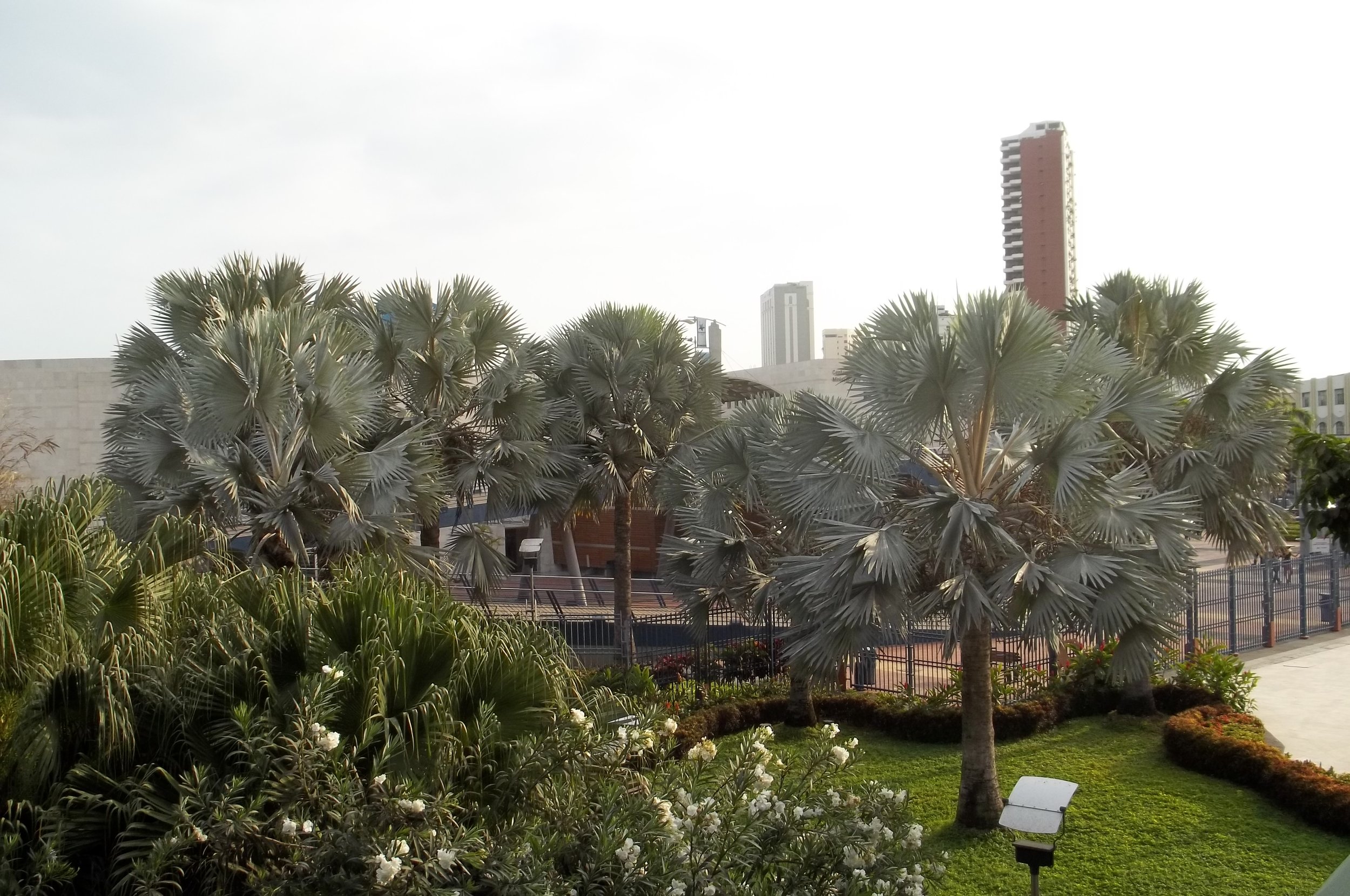
Connecting With Your Roots.
The second generation problem of feeling disconnected.
By: Grace Galarraga
The palm trees of Ecuador, taken by my Grandmother.
Over the summer, I saw In The Heights with my family. It was my first time in a movie theater since before the pandemic and it was a movie that I was very much looking forward to seeing. It was written for both Broadway and film by none other than Lin Manuel Miranda, someone that I admire. It was a hot summer day, but not as hot and sticky as the summer that sets the precedent in In The Heights- a heat that burns the skin and causes a blackout and a carnival (de barrio).
As the characters wander the streets of Washington Heights, New York and go about their daily lives I began to feel the hot summer air on my shoulders and skin, the sweat building up in my hair from the heat. It’s a summer that I know all too well, and one that I haven’t experienced in a long time.
But there’s something that lies beyond the summer heat in New York that pricks at my heart. The characters in the film take part in a unique community of people, coming together as one to eat food that I have eaten, and listen to music that I have listened to. And yet- there’s a disconnect. A feeling that’s there but not quite.
Photo credit: Macall Polay © 2019 Warner Bros. Entertainment Inc. All Rights Reserved.
I looked over at my father seated beside me, who was smiling occasionally as he watched. It was a smile that reeked of remembrance or perhaps, a smile that related. Discussing the film with him after, I realized just how much In The Heights portrayed his immigrant experience growing up in Brooklyn after immigrating to the United States from Ecuador.
And as I watched In The Heights that one summer evening, I realized that I couldn’t relate. Not quite.
Growing up, I never really thought about where I came from. The first place I ever lived in was Flushing, Queens and in Queens, everyone’s from somewhere else. It’s rare to not be part of an immigrant family. Life beyond Queens, however, informed me that I was different.
Life beyond Queens forced me to think about where I came from, a thought that had rarely ever crossed my mind before.
I have always known that my family and I are Ecuadorian and that my parents came to the United States in the 70’s. I knew that we’re immigrants, but I didn’t quite know what any of it meant. I’ve never really felt a connection that runs deep within me, like the characters felt in In The Heights. I knew that was why I came home after watching that film feeling elated and yet empty inside. I felt like I got it, but not really. I felt like a part of the Latinx community, but not really, and coming to terms with that feeling was certainly an odd experience. At the time, it almost broke my heart.
It feels like I haven’t gotten to know a large chunk of me, a chunk of me that makes up my very existence.
Behind my thoughts lurked the simple fact and feeling that made it all click: I can’t be alone in this. I know that there has to be people who feel the same way.
The desire to find out why this feeling of cultural disconnection plagued me allowed me to discover that so many children of immigrants feel almost the exact same way. As the second generation naturally takes a step back from the original culture, there’s something within that pulls us straight to it. There’s a fight. We don’t want to forget, we want to learn.
Guayaquil, Ecuador. A photo taken by my grandmother .
MUSINGS ON THE DISCONNECTION FROM THE DISCONNECTED THEMSELVES:
About an hour north of Los Angeles lives Kiana Ardalan, a Persian American art student. About an hour south lives Florence Pham, a Vietnamese American and also fellow artist. And across the country in North Carolina lives Cynthia Pando, a Mexican American mother and content creator on TikTok. Each of them have experience with cultural disconnection in relation to their own culture.
Donning bright green hair and a cool outfit, Kiana Ardalan is nervous as they take a seat to talk about disconnection. It soon becomes clear that this isn’t the first time that they’ve thought about this topic before. As the nerves begin to melt, their story begins. Born in Ohio before moving to California, Ardalan always knew that they looked different than the other kids at school. They explain that their skin tone has lightened over the years and that when they were younger they had a much darker complexion. This caused some confusion and led to asking some big questions.
“I don’t remember this myself, but my mom told me that one day I came home and asked her ‘why am I the only kid without blond hair and blue eyes?’ It kind of shocks me that even as a preschooler I could recognize a difference between me and my classmates.”
These types of questions are not uncommon, especially when growing up in a predominately white environment, where it becomes abundantly clear that you are different. We discussed the odd embarrassment that we felt as children when we would bring our lunch from home, or when we would talk about what we had for dinner the night before. It was never anything as simple as a peanut butter and jelly sandwich, and of course, when you’re a kid afraid of being judged, everything is embarrassing. “Sometimes you want to share things or you want to bring lunch to school from home, but you're too embarrassed to eat it in the cafeteria.”
“So yeah,” Ardalan summarizes, “those were some key moments in elementary school where I felt like I was embarrassed about being Persian, which is something that I've worked through since then, but it was definitely prevalent when I was younger.”
Ardalan’s journey of self healing came in their later years of middle school and high school. “I worked towards being more forgiving towards myself and starting to embrace parts of my culture that I enjoy.” And instead of finding a group of friends that were completely close minded, Kiana was able to find a friend group that wanted to learn with them. “I was really lucky to have a really good group of friends who also wanted to get to know my culture as well.”
Now Ardalan has reached a point in their journey that is in many ways, the complete opposite of where they were back in middle school, desperately trying to push any remnants of their own culture away. This was, however, the act of a child. A part of growing up is learning to accept all parts of yourself, including an abandoned culture. Growing up is learning to love that abandoned culture because it’s just, quite simply… you. It’s never too late to start reclaiming your cultural disconnection.
“After growing up and trying so hard to push that part of me away, I’ve definitely reached the point where I feel like I want more because I ignored it (my culture) for so long. I feel like I missed out on so much.”
Vietnamese American Florence Pham defines themselves, first and foremost, as an artist- and they sure do look the part. Short, spiky styled hair, wide wire rimmed glasses and a love for makeup, fashion and anime all take part in the creation of Florence. They express themselves through art and style almost seamlessly, but they haven’t always been this comfortable with themselves. In fact, their connection with their culture is still a part of themselves that they are learning to love.
It’s not easy to love your culture when you associate it with negative memories and thoughts. Pham recalls moments of “tough love” displayed towards them as a child, an act that was seemingly normal and common for their parents who hailed from Vietnam after the war was over. As Pham describes, “there was a lot of heavy shit going on.”
For Pham, the act of tough love would only strengthen the disconnection to their Vietnamese culture further. “The way they would discipline me, or like, talk to me was really different compared to the typical American family,” Pham stated in their soft voice, recalling memories of childhood. “In the way they tried to, ‘inspire’ me, would be in a verbally abusive tone, saying that the way I am at the moment would never be successful. It made me feel even more disconnected.”
It was hard for Pham to connect with other Asian people in their area during middle school and a bit of high school as well. They found that they didn’t quite fit in. “There’s always been that stereotype that Asians are always the smartest ones, but it’s only because they're being forced to be hardworking. And I was never able to fit into that stereotype because I’m more of an artistic person. I’ve never been really good with technical classes.”
In some cases, one can feel disconnected from their culture because their parents want to. The feeling of needing to assimilate into the culture of the United States can be strong amongst immigrants. Cynthia Pando, mother and private health manager (as well as growing content creator) located on the other side of the country in Greenville South Carolina (although originally from El Paso, Texas), describes this feeling as a Mexican American.
“(My culture) was sort of kept from me by my stepfather because his side of the family thought that if you were to let them [white Americans] know then it was gonna hinder your ability to progress and get anywhere in the States. So then my parents, even though they had the best intentions for me, purposely kept my culture from me. When I would go back and visit, you know, my cousins in Mexico or even people in El Paso, where I grew up, I was just immediately disconnected and just seen as someone who didn't belong, I guess.”
Connecting with something that your parents don’t want you to connect with or even recognize is extremely difficult. It can make you feel like an outcast amongst people that are the exact same ethnicity as you. “When I was in middle school I was one of five Hispanics and my whole middle school,” Cynthia describes. “So I just really didn't have anyone to sort of fit in with. It’s like Selena says, ‘you're not American enough for the Americans and you're not Mexican for the Mexicans’ and you just stood kind of stuck in the middle.” Selena, of course, is a reference to the highly beloved Mexican-American musician who is seen as an icon and legend.
If you ever watch Cynthia’s videos on TikTok (under the adorable username cynna.bunn), you’ll begin to grow an affection for her dating videos. She talks into the camera as if she’s talking to a friend on FaceTime. It’s cool and collected, but she talks about how her cultural disconnection makes itself apparent when dating as well. Cynthia has found that while she enjoys dating Latino men, sometimes there’s a disconnect. “Not all of them, but some of them have a standard on how Latina you have to be to date them. And I don't always make it to the dating pool, I guess.”
The Struggle With Language.
When Spanglish is all that you know…
The streets of Ecuador, photographed by my grandmother.
“I always have to have my mom with me so she could explain what they are saying and to help me talk and communicate.”
— Florence Pham
“My ability to speak Spanish kind of went away, or it just got really bad and whenever we would go back to visit my grandparents in El Paso, I remember being teased a lot by my cousins because my Spanish wasn't what it was supposed to be.”
— Cynthia Pando
“I live at home currently with my parents so I try to communicate with them in Farsi, but I have a bad accent.”
— Kiana Ardalan
While your parents might be fluent in the language of their home country, you might not be. I found myself relating to almost everyone I talked with, as we all have issues with the language that we are “supposed to know.” In a recent article published in the New Yorker titled, “Forgetting My First Language”, writer Jenny Liao talks about the sadness and disconnection that comes with not knowing the language of your culture and of where you came from.
“For many children of immigrants, to ‘succeed’ in America, we must adopt a new language in place of our first—the one our parents speak best—without fully considering the strain it places on our relationships for the rest of our lives.”
We find ourselves in the in between- a place of understanding but not knowing, of being able to listen but not being able to respond. It forms a connection that holds on by a thread.
She goes on to write that with each visit to her parents she feels emptier, “like I’m losing not only my connection to my parents but also fragments of my Chinese heritage. Can I call myself Chinese if I barely speak the language?” That last sentiment goes deep. It’s hard to feel like you’re part of something when you’re missing out on something so major like an entire language.
For me, I know that my Spanish is rusty, and will likely be rusty for a long time until I can sit down and learn it completely. I didn’t expect my high school Spanish teacher, who was indeed a white man and only spoke Spanish Spanish (the lispy Spanish from Spain and obviously not the Spanish I grew up around), to call me out on not speaking the language based on my last name.
“Your parents never taught you?”
I have never and will never resent my parents for not teaching me Spanish, and in that moment I felt oddly invalidated as a Latinx person. Was I supposed to know the language? Does not knowing the language make me less than Latinx? These daunting questions were part of my experience with my culture, and sometimes I wish they weren’t.
Florence Pham thinks about the phone calls they have with their older relatives who live back in Vietnam. While they haven’t yet visited the States, they still FaceTime once in a while but Florence finds themselves not being able to communicate on their own. “I always have to have my mom with me so she could explain what they are saying and to help me talk and communicate.” Pham explains that their parents come from different sides of Vietnam, which create two very different accents that have muddled together over the years. “My parents lived here for so long that when they talk to each other, their accents are mixed together. So when I hear other Vietnamese people talking, who are not my parents, or my grandmother, I have no idea what they're saying. I can only like, assume what they're saying. So it makes it hard for me to connect with other relatives.”
For Cynthia Pando, Spanish started becoming more and more obscure in her life as she grew up. The times her disconnection has been most prominent has been because of language. “My ability to speak Spanish kind of went away, or it just got really bad and whenever we would go back to visit my grandparents in El Paso, I remember being teased a lot by my cousins because my Spanish wasn't what it was supposed to be. My grandma's neighbor would always ask me, ‘Well, why don't you speak Spanish? Like why don't you just know this?’”
Kiana Ardalan knows the language pretty well, even if when they speak it may sound like a “bad accent” (according to them), they are still able to maintain a conversation with their family. “I live at home currently with my parents so I try to communicate with them in Farsi, but I have a bad accent. Hearing other people speak Farsi and hearing my grandparents stories about what it was like growing up in Iran really helps me strengthen my connection to being Persian.”
Why do we feel this way?
Beyond the language barriers and the in-betweenness of it all lies the question: Why? Why is it that second generation immigrants in particular feel this way about their culture?
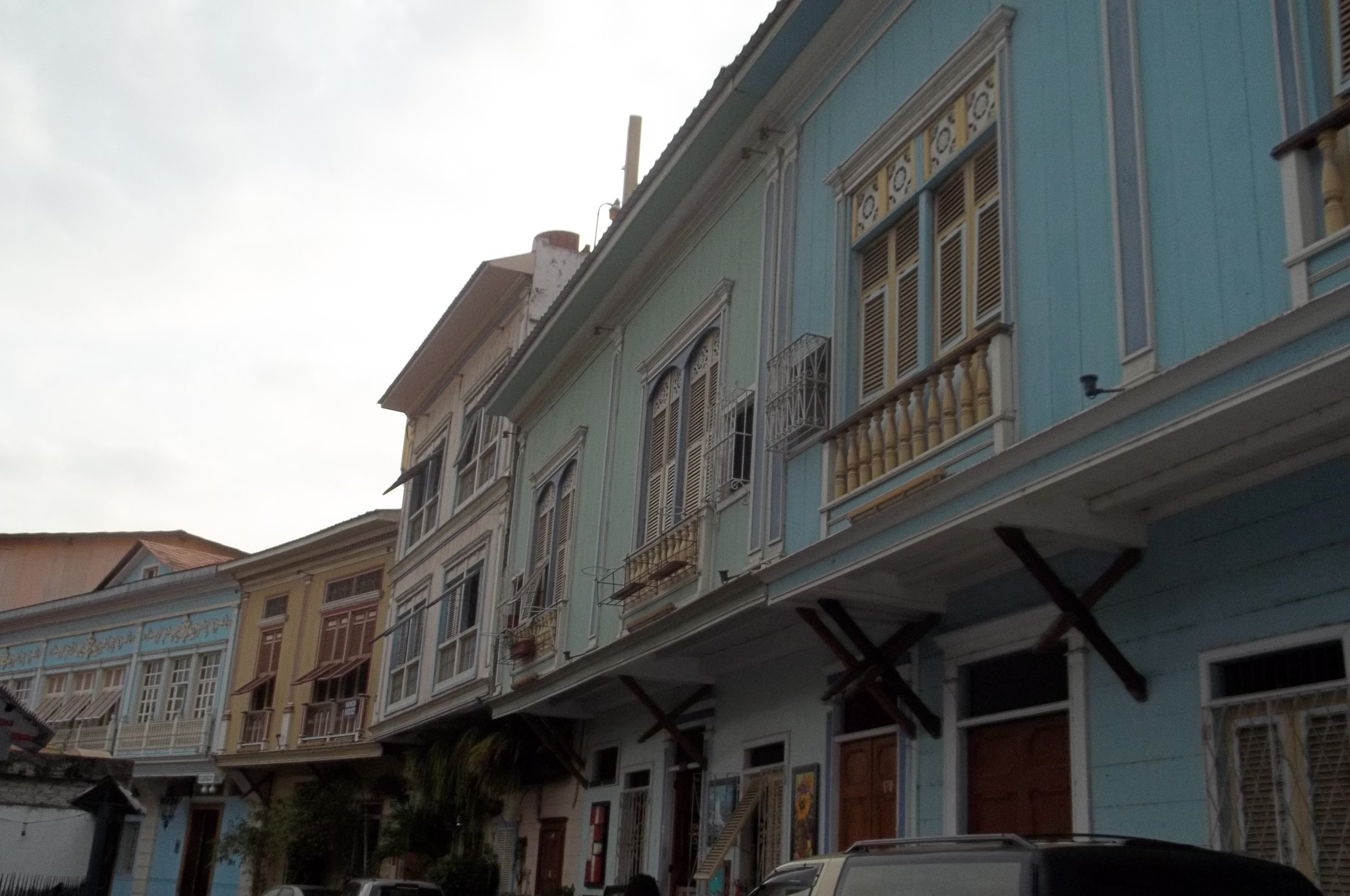
Reasons for Disconnection
-
Lack of representation.
-
Assimilation.
Lack of Representation.
One of the reasons for disconnection is a lack of representation of different cultures in the media. Our disconnection cannot be blamed entirely on this, but it also cannot be ignored. Growing up in the early 2000s and late nineties, there was also a huge lack of representation of other cultures in film and television.
“For kids, media representations may be even more meaningful as they look for cues in their social environment to develop and shape their understanding of ethnic-racial groups.”
The content that we saw growing up was not necessarily directed at people of different races, cultures and ethnicities. Florence Pham acknowledges this fact, explaining that “I was even more distant from Vietnamese culture because there wasn't a lot of Vietnamese related content or media in America, when I was growing up, around the 2000s. Only very, very recently, we started seeing more Asians being popularized in the media right now.”
From the incredibly racist portrayal of Asians in film to the completely stereotypical, the representation, as Pham stated, has only just started to get better. If you’re a fan of Netflix’s Bojack Horseman, you’ll immediately think of Diane Nguyen when thinking of a Vietnamese American character. While the show had created an incredibly well rounded, complex character that a lot of people of color and children of immigrants (myself included) related to, Bojack Horseman writers received backlash over the fact that Diane Nguyen was voiced by Brie Larson, a white woman. Other animated shows like Big Mouth, also received similar backlash for the mixed-race character Missy being voiced by Jenny Slate. It creates an odd feeling of not being fully represented. If you’re going to have complex animated main characters that are people of color, commit to it.
The Dog Days Are Over.
Bojack Horseman, Season 5 Episode 2
This of course, goes past Asian representation, but representation of other cultures all around. Cynthia describes seeing a lack of “good” representation for Latinx people while growing up. Sofia Vergara’s character in Modern Family and The George Lopez show come to mind.
“Sophia of course is so over sexualized. Her accent is like, hit even harder than what it is in real life. And she's part of a supposedly drug lord family. I think the representation is there but in a way that could possibly be a little bit more harmful than positive.” Cynthia goes on to talk about The George Lopez show, “the audience sees him as a disconnected father and his mother is like, just very barky and snappy and just always complaining and then like, you see the kids who don't really want anything to do with the culture really. I can’t say it's (representation) is not there, but I don't know if it's in the light that I would want to see maybe.”
Sofia Vergara as Gloria Delgado-Pritchett in Modern Family via IMDb
The truth is, so many cultures and ethnic groups have been made fun of in the media for years, and only finally we are seeing some change in that, slowly but surely. It’s time that people realize the importance of good representation in the media as it can let you connect with your culture in a different way.
Assimilation:
the process of receiving new facts or of responding to new situations in conformity with what is already available to consciousness.
“Immigrants and their US born descendants are expected to blend into and find acceptance, if not success, in the mainstream. Indeed, assimilation is often linked to the American dream. Those who do not assimilate or who are deemed inadmissible are generally regarded and treated as outsiders or failed citizens.”
— Catherine S. Ramirez, Keywords for Chicana/o Studies
“In many instances of assimilation, formerly distinguishable groups, practices or products eradicate, blend into, or transform one another, becoming more similar in the process. However in others, the dominant group absorbs a minority or minority group as its distinct, constitutive and subordinate other.”
— Catherine S. Ramirez, Keywords for Chicana/o Studies
When it comes to the history of the United States, the process of assimilation is often associated with Americanization. Americanization has themes of xenophobia and racism, and this can be seen specifically in the treatment of the Native Americans. Once the Indian Wars ended, religious ceremonies were outlawed, and Native American boarding schools were put in place. The quote, “kill the Indian in him, and save the man,” was the mindset during this time.
Their language could no longer be spoken, and they could no longer practice their religion and daily activities. It was exchanged for American ideals in an aggressive and violent way. In recent news, the bodies of more than 1,000 Indigenous children were found at a boarding school in Canada. While this horrific story does not take place in the United States, it still shows how the placement of these boarding schools and the assimilation process was a harsh and disgusting environment.
This process of assimilation and Americanization are ingrained in America’s culture today. People that are seen as different from the common white American have often felt the need to conform. With this mindset, some immigrants believe that their culture is less than American culture and therefore should be pushed down or ignored, similar to how Cynthia Pando’s step father felt about their Mexican culture. If your parents don’t want to associate with your own culture, then what do you do?
Immigration culture and assimilation have gone hand in hand since the birth of America. Immigrants had to learn how to “become” American, how to leave behind elements of their culture in order to “fit in.” To assimilate was covered with the false pretense of being able to “get ahead.” It was often associated with the popular term “the melting pot,” coined in 1908 by Israel Zangwill.
“When you hear the term melting pot or you think about that type of language, it actually dissolves any of the quality of other cultures and of who we are,” says Rebecca Lehrer, co-founder of the website Mash Up Americans. This term has been used for a long time, especially when describing heavily diverse cities like New York or Los Angeles. This term alone furthers the belief that our individual culture should simply melt away. “For some people, that’s fine, but for others, it’s actually very sad and minimizing.”
Some Advice.
Ernesto Colin, LMU associate professor part of the School of Education, dives deep into why some of us might feel this disconnection to our culture, especially those of us from a second or third generation of immigrants. I asked him for advice for anyone who is struggling with disconnection to their culture, and if there’s a chance to connect eventually.
“My first piece of advice is don't be hard on yourself. There is something about the history and the dynamics and the ethos of the United States that has strong elements of assimilation, strong elements of monolingual socio politics, where English is the dominant language.” Hearing this, as someone who speaks broken Spanish, was a relief. He explains that in the United States, we don’t have a deep tradition of teaching multiple languages like other countries do. Some countries will teach language classes from the young age of 5. He points out that, “even though we don't have an official language, we sort of do because of anti immigrant sentiments in the United States, in the history of xenophobia and all these other kinds of things. We sort of have this assimilationist English-only undercurrent in the United States.”
He discusses passing whiteness, a topic that has been ingrained in so many cultures for so long. From what I’ve witnessed in Latinx culture, passing whiteness is incredibly important for some people- almost too important. It always seemed that in my extended family, having a darker skin tone was automatically deemed worse than having a lighter complexion. Unlike the typical American tradition of tanning until you’re completely charred, maintaining pale skin has been a key feature in Latinx, as well as other communities, for quite some time now. This notion is part of the internalized racism that many immigrants have.
Professor Colin assures me, saying that, “a lot of people have experienced the challenges of feeling like you don't even belong back in the country of origin. Try to stay strong and just, you know, come with an open mind and come with the spirit of learning. There's something about it that effects our own sense of identity and our sense of self- and everybody always wants to reconnect to their roots, right? There's something that's very human about that.”
Thanks for reading!
